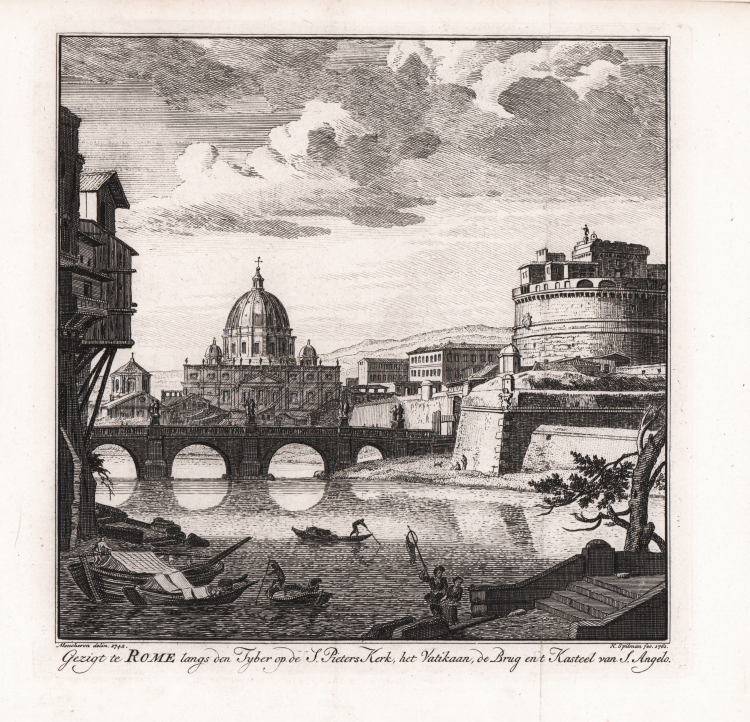



| Reference: | S46389 |
| Author | Hendrik Spilman |
| Year: | 1762 |
| Zone: | Ponte Sant'Angelo |
| Printed: | Amsterdam |
| Measures: | 190 x 195 mm |


| Reference: | S46389 |
| Author | Hendrik Spilman |
| Year: | 1762 |
| Zone: | Ponte Sant'Angelo |
| Printed: | Amsterdam |
| Measures: | 190 x 195 mm |
View of Rome Hendrik Spilman after a painting by Isaac de Moucheron (1670- 1784) dated 1742.
Hendrik Spilman (1721, Amsterdam – 1784, Haarlem), was an 18th-century painter and engraver from the Northern Netherlands.
He spent his working life in Haarlem, where he enrolled in 1742 as a member of the Haarlem Guild of Saint Luke. He was a pupil of Abraham de Haen, who trained him as a painter and draughtsman, but he is best known for his topographical drawings and engravings of cityscapes and important buildings. He made engravings after drawings by de Haen, Jan de Beijer, Cornelis Pronk, and Cornelis van Noorde in addition to his own work for various publications.
Etching, printed on contemporary laid paper, with margins, e central fold, otherwise very good condition. Rare.
|
Hendrik Spilman (1721, Amsterdam – 1784, Haarlem), was an 18th-century painter and engraver from the Northern Netherlands.
He spent his working life in Haarlem, where he enrolled in 1742 as a member of the Haarlem Guild of Saint Luke. He was a pupil of Abraham de Haen, who trained him as a painter and draughtsman, but he is best known for his topographical drawings and engravings of cityscapes and important buildings. He made engravings after drawings by de Haen, Jan de Beijer, Cornelis Pronk, and Cornelis van Noorde in addition to his own work for various publications.
|
|
Hendrik Spilman (1721, Amsterdam – 1784, Haarlem), was an 18th-century painter and engraver from the Northern Netherlands.
He spent his working life in Haarlem, where he enrolled in 1742 as a member of the Haarlem Guild of Saint Luke. He was a pupil of Abraham de Haen, who trained him as a painter and draughtsman, but he is best known for his topographical drawings and engravings of cityscapes and important buildings. He made engravings after drawings by de Haen, Jan de Beijer, Cornelis Pronk, and Cornelis van Noorde in addition to his own work for various publications.
|